Discover 12 Different Tracksuit Fabrics for Optimal Comfort and Style
Tracksuits are no longer just for workouts—they are a popular choice in everyday fashion too. Choosing the right fabric can make a big difference in comfort, style, and durability.
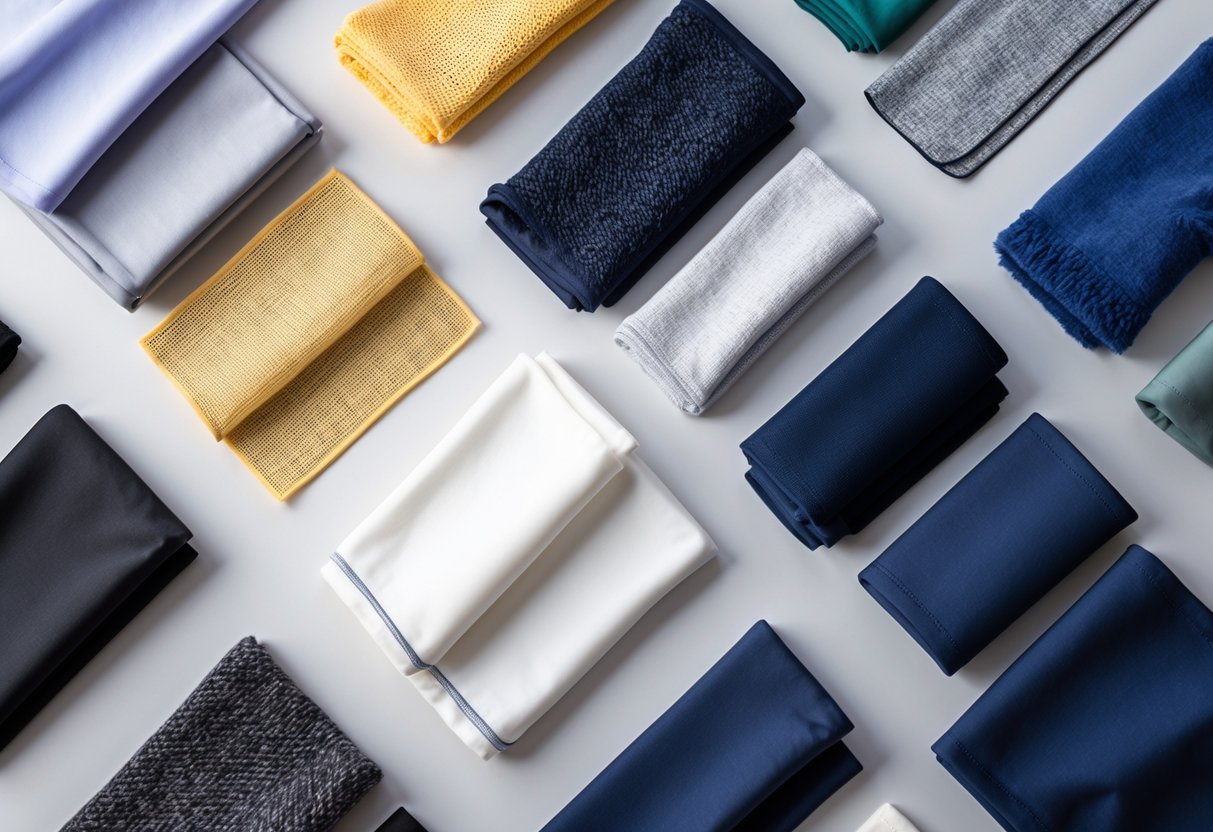
Understanding the different tracksuit fabrics helps people pick materials that fit their needs, whether for exercise or casual wear. This guide covers the 12 key fabrics everyone should know about when shopping for tracksuits.
1) Cotton
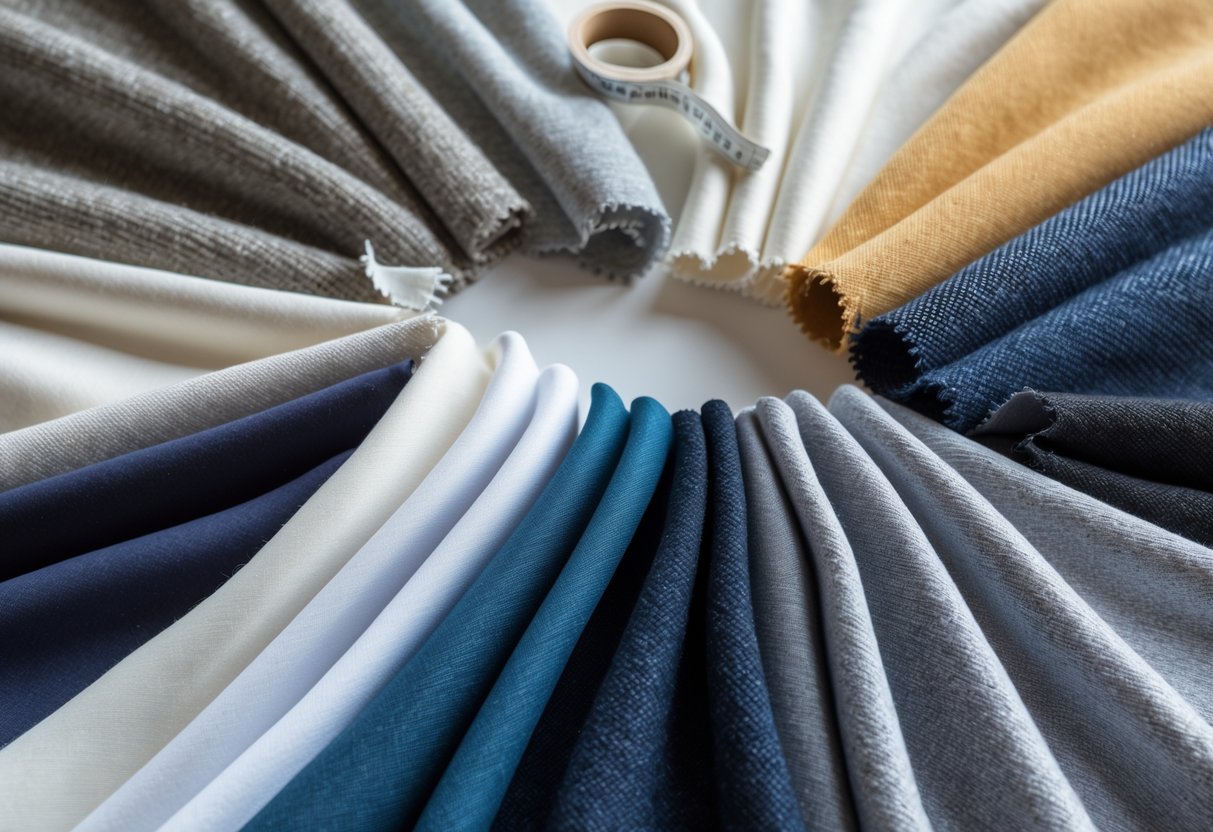
Cotton is one of the most popular fabrics used for tracksuits. It is known for its natural softness and breathability, making it comfortable to wear for long periods.
This fabric absorbs moisture well, which helps keep the skin dry during light activities. Cotton is also gentle on the skin, reducing the risk of irritation.
However, cotton tends to hold water and takes longer to dry compared to synthetic fabrics. This means it may not be the best choice for intense workouts or heavy sweating.
Cotton tracksuits are ideal for casual wear and light exercise. They provide comfort and a classic look that many people prefer.
The fabric is also durable and easy to care for, making it a practical option for everyday use. It works well in cooler weather but may feel heavy when wet.
2) Polyester
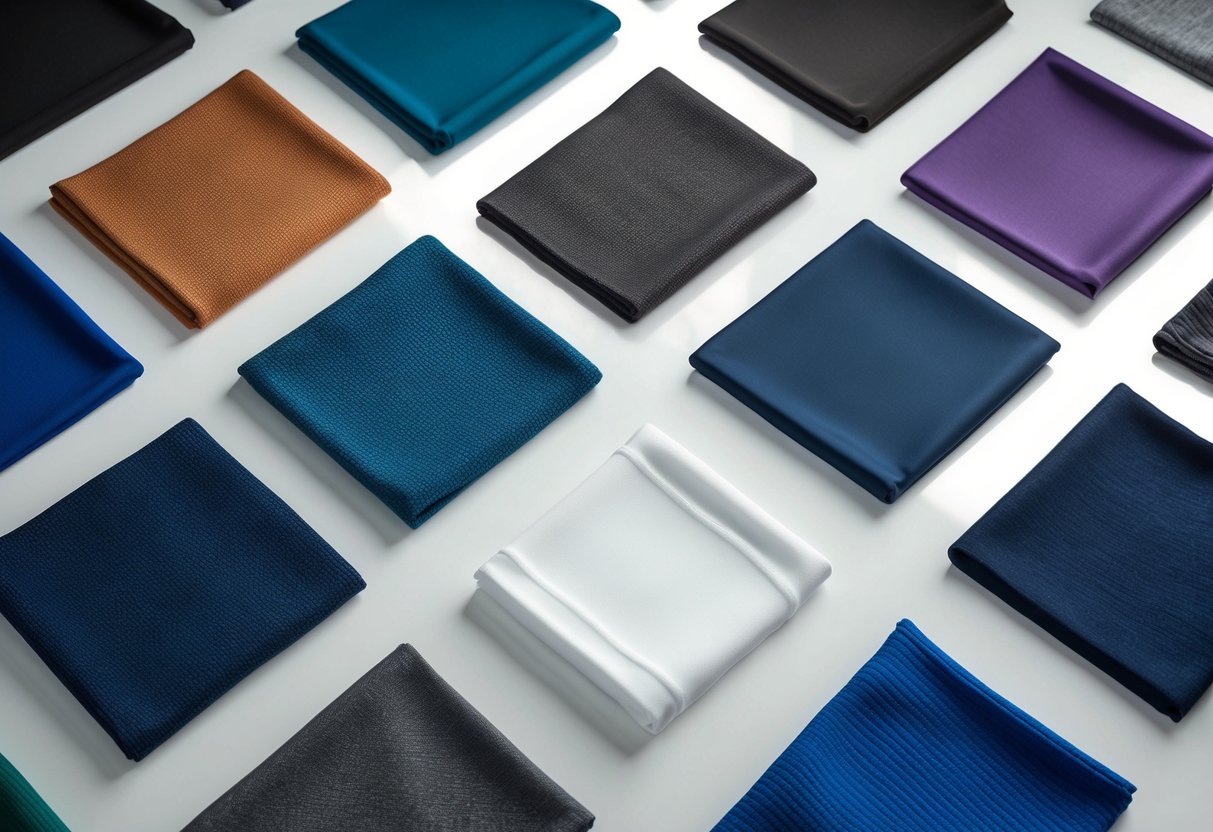
Polyester is a popular fabric for tracksuits because it is lightweight and strong. It dries quickly, which makes it a good choice for workouts where sweating is common.
This fabric also wicks moisture away from the skin. This helps keep the wearer dry and comfortable during physical activities.
Polyester is durable and holds its shape well. It resists shrinking, stretching, and wrinkles, which means the tracksuit will look good even after many uses.
Tracksuits made from polyester allow for ease of movement. The fabric is smooth and can be blended with other materials like spandex to add stretch and flexibility.
Because polyester is synthetic, it can trap heat. However, many polyester tracksuits are designed with breathable weaves to improve airflow.
Overall, polyester tracksuits suit people who need a fabric that blends comfort with performance, especially for active use and outdoor sports.
3) Spandex
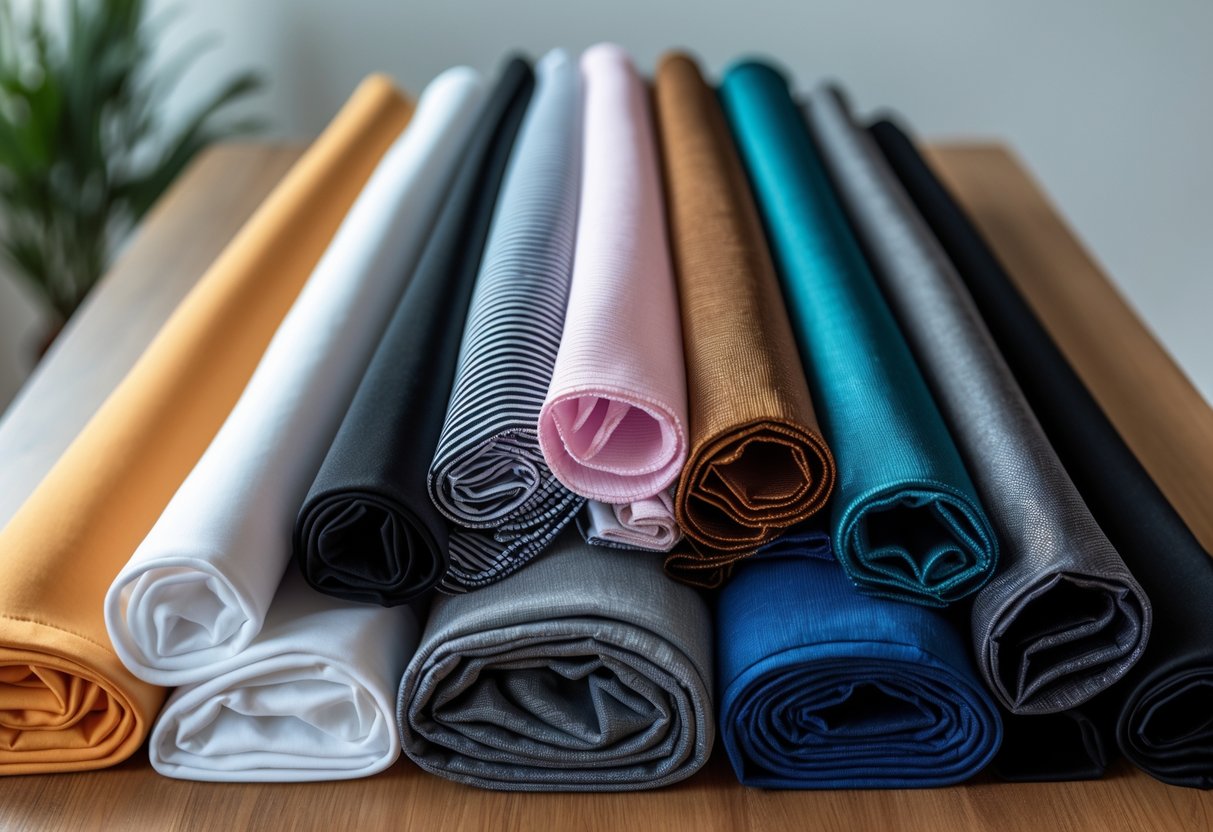
Spandex is a stretchy synthetic fiber known for its excellent elasticity. It is often blended with other fabrics to add flexibility and allow better movement.
This fabric helps tracksuits fit snugly without restricting motion. Because of its stretch, it is popular in sportswear where flexibility is important.
Spandex also holds its shape well, so it prevents garments from becoming baggy over time. It is lightweight and comfortable, making it suitable for both exercise and casual wear.
However, spandex by itself is not very durable or breathable. It is usually combined with materials like polyester or cotton to improve durability and comfort.
Tracksuits with spandex offer a good balance of stretch and support. This fabric supports active movements while maintaining the garment’s fit and form.
4) Nylon

Nylon is a synthetic fabric widely used in tracksuits. It is strong and lightweight, making it a practical choice for activewear.
The material dries quickly and resists water. This helps keep the wearer comfortable during workouts or outdoor activities.
Nylon is also elastic, which allows for good flexibility and freedom of movement. It can stretch without losing its shape.
Besides performance, nylon is abrasion-resistant. This makes tracksuits more durable and able to withstand regular use.
Its smooth texture gives a sleek look, so nylon tracksuits often combine style with function. The fabric works well for both casual wear and sports.
Overall, nylon is popular for its balance of strength, comfort, and quick drying qualities. It suits those who need reliable and durable tracksuit material.
5) Fleece

Fleece is a popular fabric for tracksuits, especially in cooler weather. It is soft, warm, and lightweight, making it comfortable to wear for long periods.
This fabric is usually made from synthetic fibers like polyester. It provides good insulation while still allowing the skin to breathe.
Fleece dries quickly and resists moisture, which makes it suitable for outdoor activities. People often choose it for sports or casual wear when they need warmth without feeling heavy.
Tracksuits made with fleece offer both comfort and functionality. They keep the wearer insulated without trapping too much heat.
Because of its softness and stretch, fleece tracksuits allow for easy movement. They are well-suited for exercise and lounging alike.
Fleece also holds up well after many washes, maintaining its shape and warmth over time. This durability adds to its appeal for everyday use.
6) Bamboo Fabric
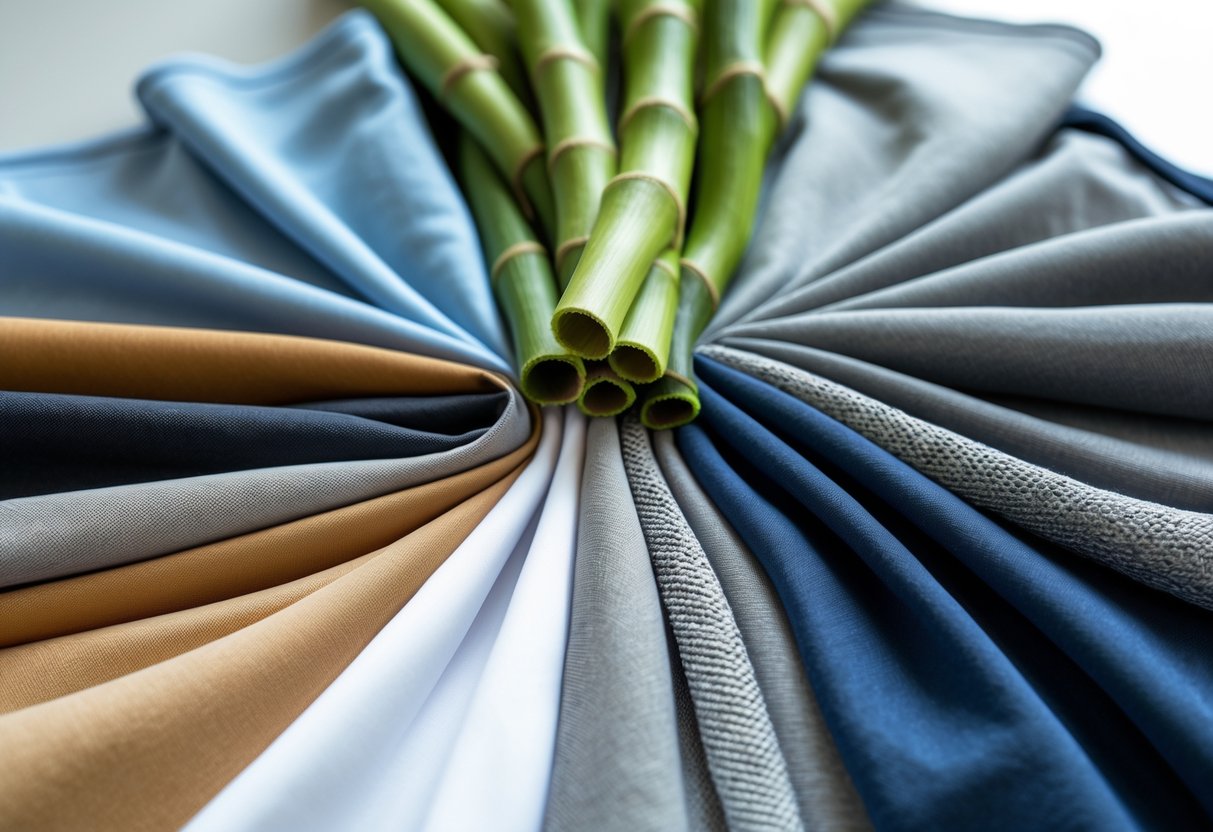
Bamboo fabric is known for its softness and breathability. It feels smooth against the skin and helps keep the wearer cool in warm weather.
This fabric has natural moisture-wicking properties. It pulls sweat away from the body, which makes it a good choice for activewear like tracksuits.
Bamboo is also praised for being eco-friendly. It grows quickly without needing many pesticides or much water, which makes it a more sustainable option.
The fabric is strong and durable, meaning it can withstand regular use and washing. It also resists odors better than some other materials.
However, bamboo fabric can sometimes require special care, such as gentle washing, to maintain its quality over time.
Overall, bamboo fabric balances comfort and practicality in tracksuits, making it a useful material for those seeking performance and sustainability.
7) TENCEL™
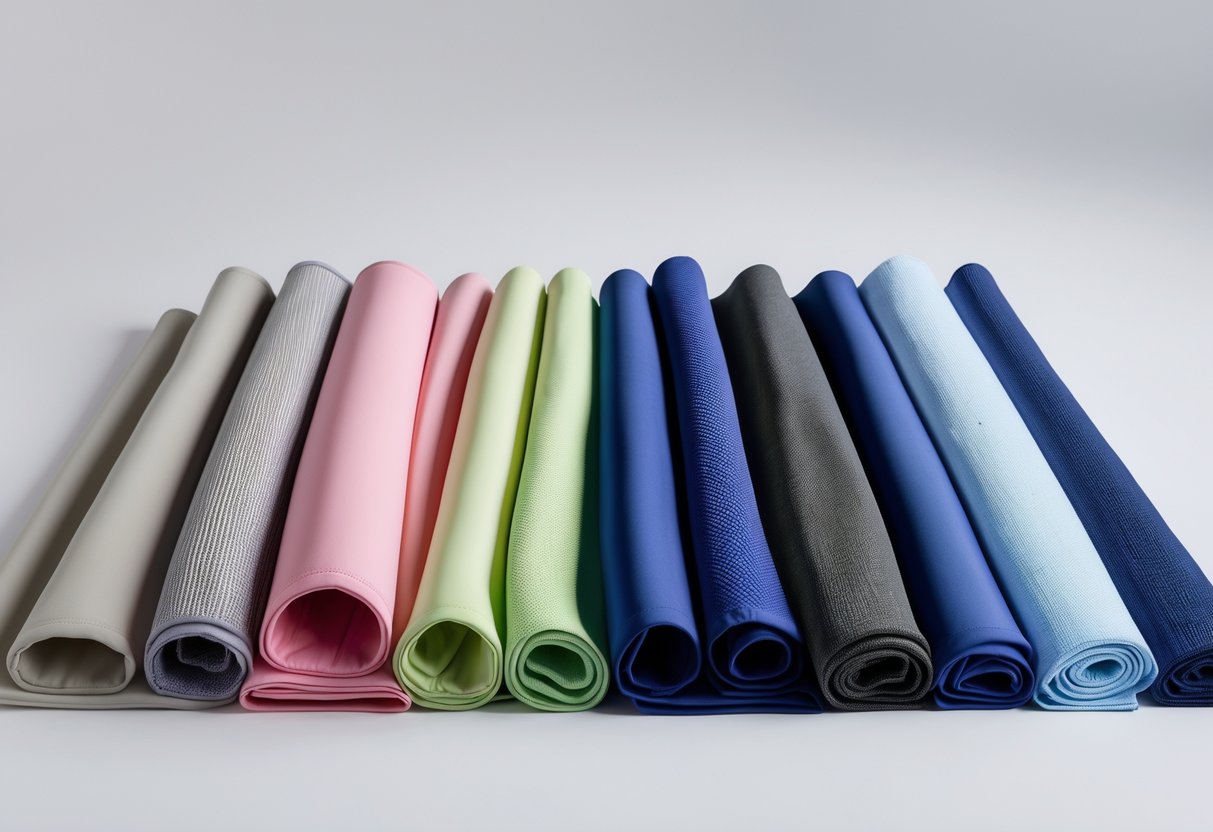
TENCEL™ is a branded fabric made from sustainably sourced wood pulp. It is known for being soft, breathable, and gentle on the skin. This makes it a good choice for tracksuits designed for comfort.
The fabric also has natural moisture-wicking properties. It helps keep the wearer dry by pulling sweat away from the body. This feature improves comfort during exercise or daily wear.
TENCEL™ is also biodegradable and eco-friendly. It breaks down naturally without harming the environment. People who want sustainable clothing often choose tracksuits made with this fabric.
Durability is another benefit of TENCEL™. It resists wrinkles and holds color well, so tracksuits keep their look longer. Its smooth texture allows for easy movement, making it fit well in activewear.
Care for TENCEL™ fabric is generally simple. Most tracksuits made with it can be machine washed on gentle cycles. This adds convenience for regular use.
8) Recycled Polyester
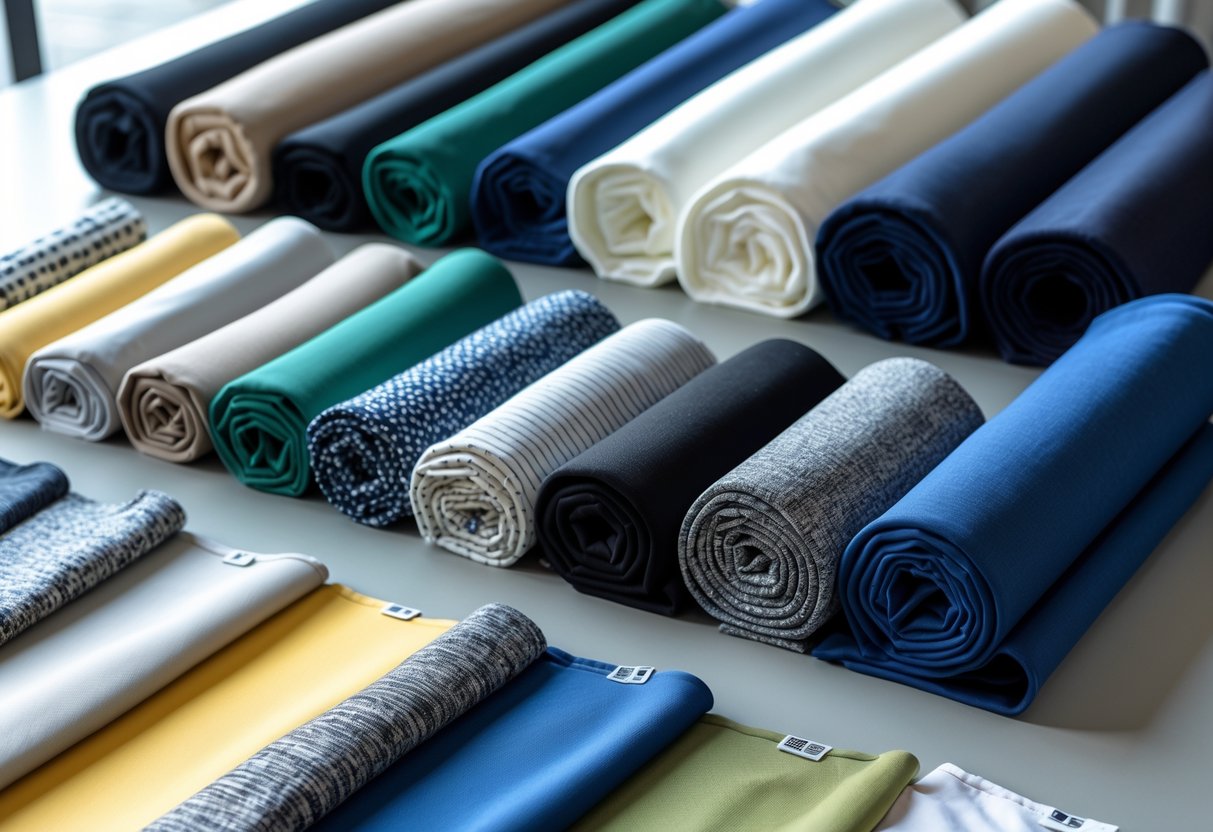
Recycled polyester is made from plastic waste like bottles. It helps reduce environmental impact by using materials that might otherwise end up in landfills or oceans.
This fabric keeps many of polyester’s usual properties. It is lightweight, durable, and dries quickly. These features make it a good choice for activewear, including tracksuits.
It also retains moisture-wicking abilities, helping wearers stay dry during workouts or casual activities. The fabric is often breathable and flexible, providing comfort without restricting movement.
Brands increasingly use recycled polyester to support sustainability. Choosing this fabric can be a step toward more eco-friendly fashion without sacrificing performance or style.
Care for recycled polyester tracksuits is similar to regular polyester. Washing in cold water and avoiding high heat helps the fabric last longer.
9) Microfiber
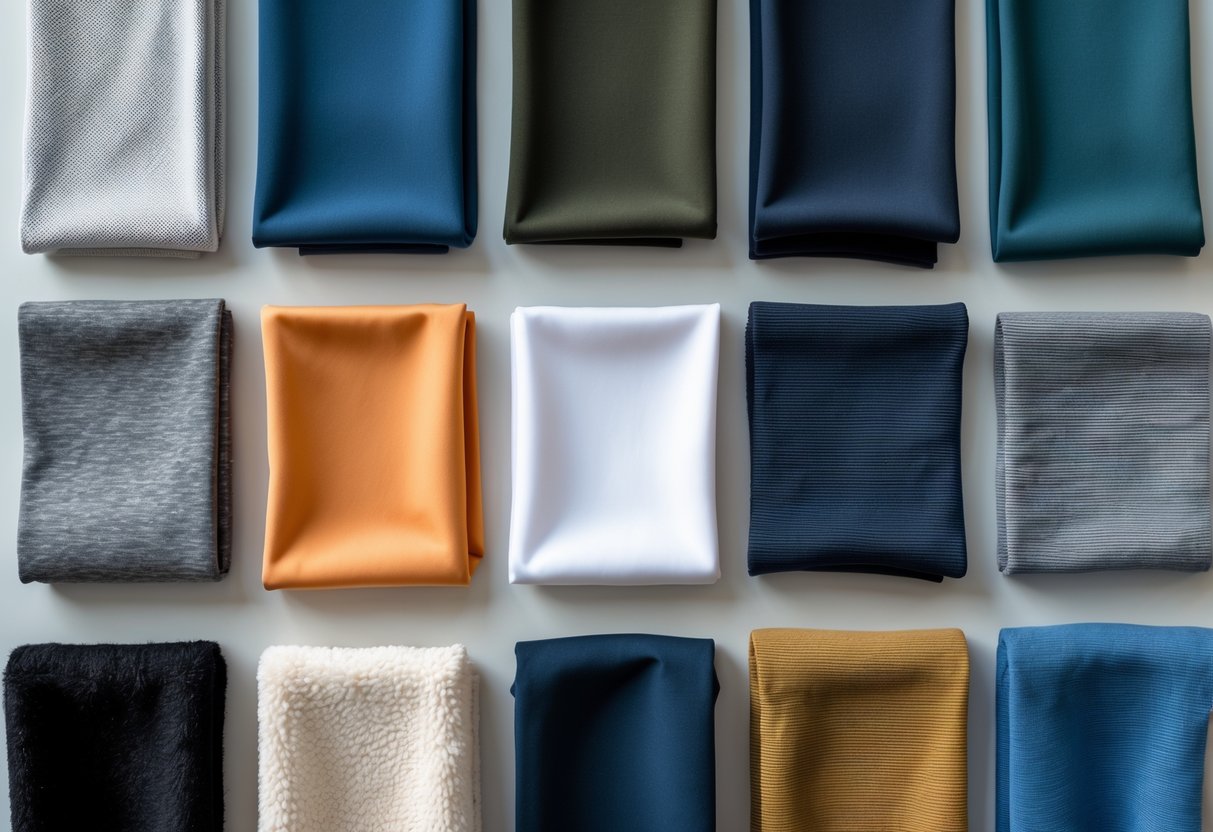
Microfiber is a man-made fabric made from very fine synthetic fibers. These fibers are much thinner than human hair, which gives microfiber its smooth and soft texture.
This fabric is known for being durable and lightweight. It holds up well over time, making it a good choice for tracksuits that get regular use.
Microfiber also offers good moisture-wicking properties. It can help keep the wearer dry by pulling sweat away from the skin.
The fabric’s fine threads allow it to be breathable while still providing some insulation. This makes it suitable for various weather conditions.
Microfiber tracksuits often appear in premium sportswear because they offer a balance between comfort and performance. They can be easy to care for and dry quickly after washing.
Overall, microfiber is a practical option for those seeking a reliable, versatile tracksuit fabric. It combines softness with strength and works well for many active lifestyles.
10) Velour
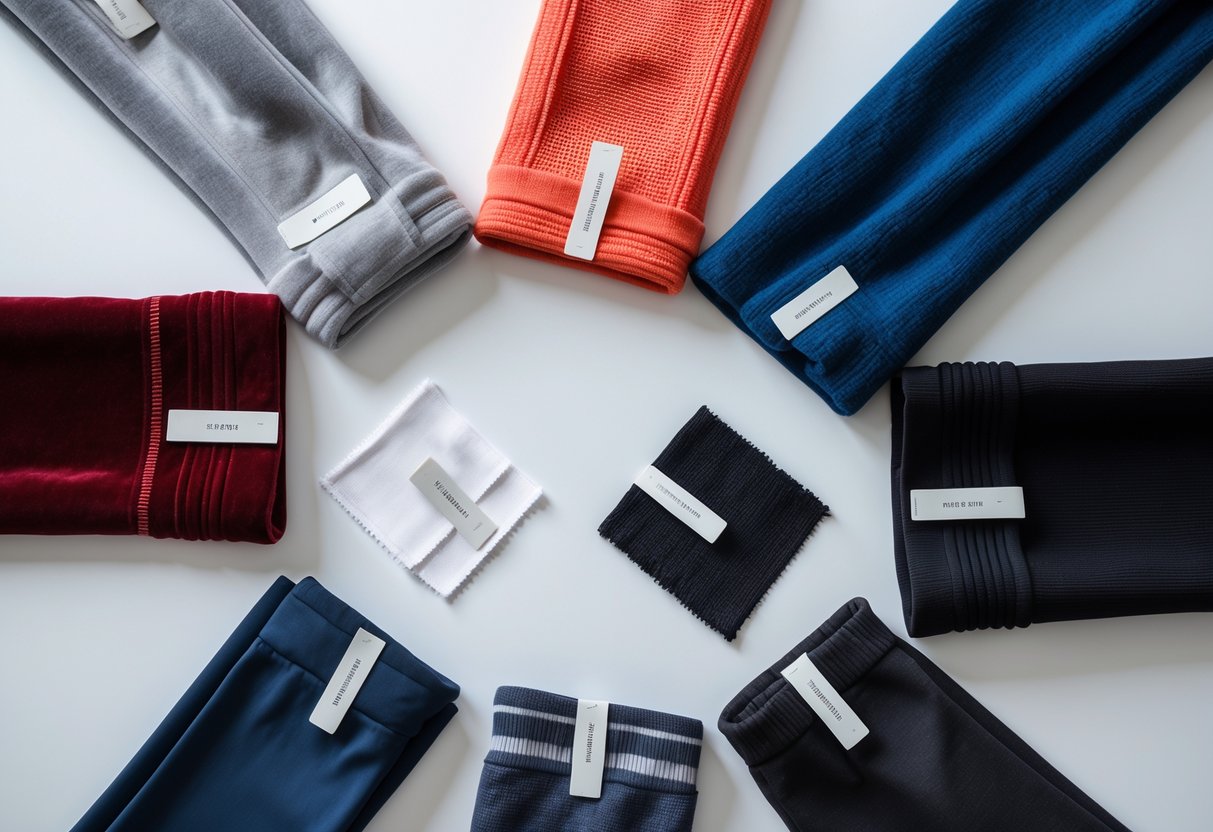
Velour is a soft, plush fabric that feels smooth to the touch. It looks similar to velvet but is stretchier and more flexible. This makes it comfortable for casual wear and light exercise.
It is often made from cotton or synthetic fibers like polyester. Velour tracksuits are popular for their stylish appearance and cozy feel.
The fabric holds color well and can be easy to care for with proper washing. However, it may not be the best choice for intense workouts because it can trap heat and moisture.
Velour tracksuits are often chosen for leisure activities rather than high-performance sports. They offer a combination of comfort and a sleek look, making them popular in fashion as well as athleisure.
11) French Terry

French terry is a knit fabric with loops on one side and a smooth surface on the other. This structure makes it soft and comfortable for everyday wear.
It is slightly stretchy and absorbent, offering a good balance between warmth and breathability. Because of this, it works well in tracksuits for cooler, but not very cold, weather.
French terry is lighter and more breathable than fleece. This makes it a popular choice for joggers, crewnecks, and transitional-season clothing. It provides moderate warmth without causing overheating.
The fabric is easy to care for and durable. It holds up well through washing and maintains its shape over time. These traits make it practical for activewear and casual outfits alike.
12) Acrylic

Acrylic is a synthetic fabric often used in tracksuits for its lightweight and soft feel. It offers good warmth, making it suitable for cooler weather.
This fabric resists wrinkles and holds its shape well. It is also quick-drying, which can be helpful during exercise or outdoor activities.
Acrylic tracksuits are easy to care for, as they can be machine washed without losing texture. However, it may not be as breathable as natural fibers like cotton.
While acrylic provides decent durability, it can sometimes feel less comfortable against the skin for those with sensitivities. It is often blended with other fabrics to improve comfort and performance.
Overall, acrylic is a practical choice for tracksuits when warmth and shape retention are priorities. It balances performance with ease of care.
Understanding Tracksuit Fabric Properties
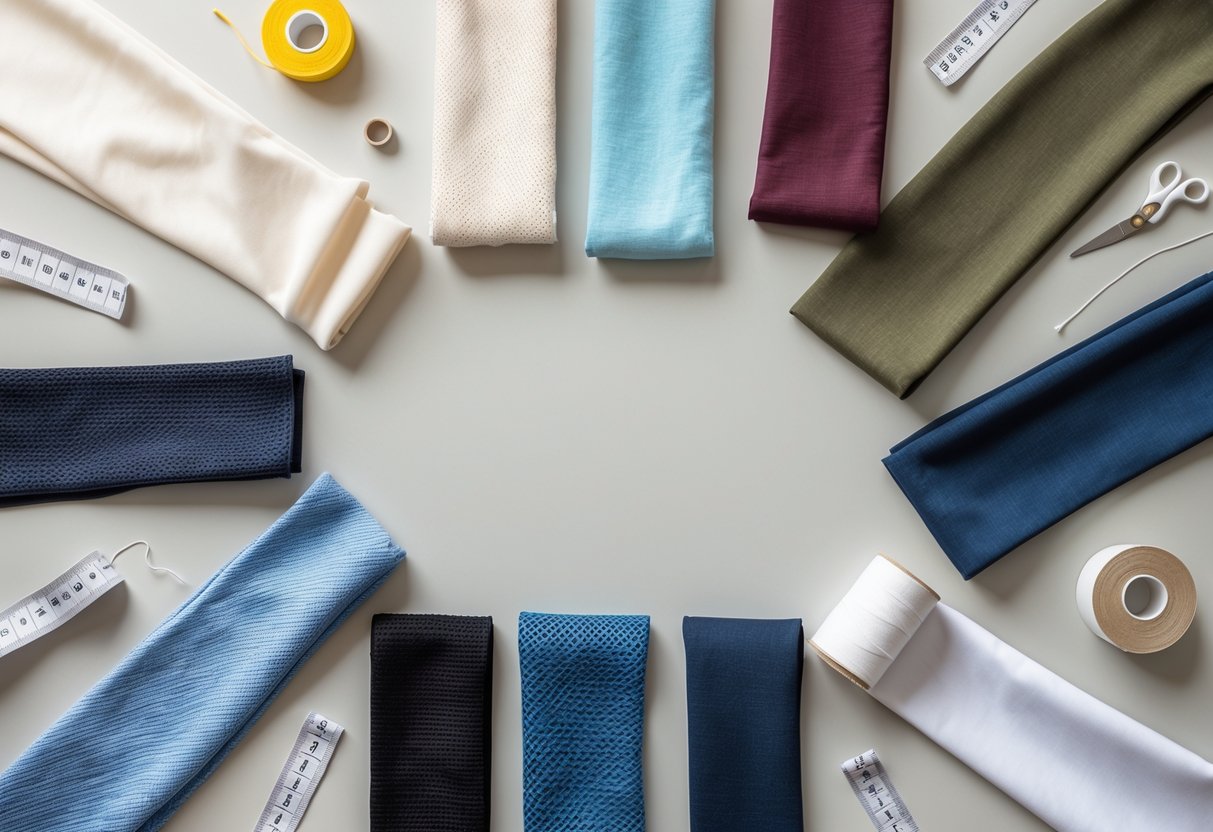
Tracksuit fabrics differ in key traits like how they handle moisture, how strong and flexible they are, and their impact on the environment. These qualities affect comfort, performance, and durability.
Breathability and Moisture-Wicking
Breathability allows air to flow through the fabric, helping to keep the wearer cool. Fabrics like polyester and nylon perform well because they let sweat evaporate quickly. This is important during workouts to avoid feeling damp or weighed down.
Moisture-wicking fabrics draw sweat away from the skin toward the fabric’s surface. This keeps the skin dry and reduces chafing. Materials blended with spandex often have good wicking properties while also adding stretch.
Natural fibers like cotton are breathable but tend to absorb moisture rather than wick it away. This can make them less suited for intense exercise but better for low-impact activities or lounging.
Durability and Stretch
Durability means the fabric can resist wear and tear over time. Polyester and nylon are known for lasting through many washes and workouts without losing shape or color. These fabrics make tracksuits suitable for frequent use.
Stretch helps the fabric move with the body. Spandex or elastane is often added to give flexibility. This allows freedom of movement during running, jumping, or stretching. Tracksuits with good stretch fit better and feel more comfortable.
Cotton blends usually have less stretch and may wear out faster than synthetic fibers. However, they offer softness that some people prefer for comfort over performance.
Eco-Friendly Material Options
Sustainability is growing in importance in sportswear. Fabrics like bamboo and organic cotton use fewer chemicals and grow faster, reducing environmental impact.
Recycled polyester, made from used plastic bottles, is another eco-friendly choice. It offers similar performance to regular polyester but helps reduce waste.
Consumers choosing sustainable fabrics balance comfort, durability, and environmental benefits. Brands often label these materials clearly to help buyers make informed decisions.
Care and Maintenance for Tracksuit Fabrics
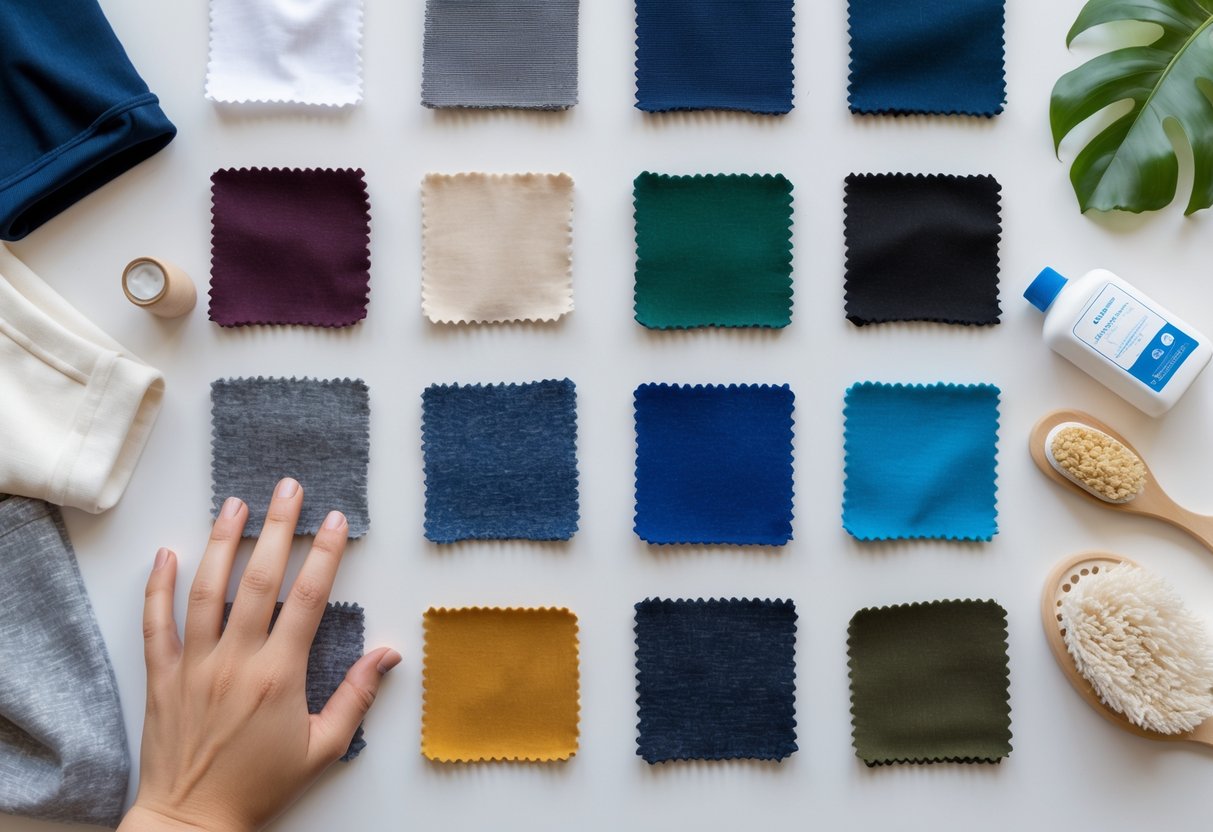
Proper care keeps tracksuits looking good and lasting longer. Different fabric types need specific washing and drying methods. Wearing habits and storage also affect the tracksuit’s lifespan.
Washing and Drying Guidelines
Always check the care label before washing. Most cotton tracksuits need cold water to prevent shrinking. Polyester and nylon usually handle cold or warm water but avoid hot water to keep fibers strong.
Avoid bleach and harsh detergents. These can damage colors and weaken fabric fibers. Use mild detergents designed for activewear when possible.
Drying on low heat or air drying is best. High heat can cause polyester and fleece to warp or shrink. Avoid tumble drying delicate fabrics like bamboo or spandex blends.
Tips for Long-Lasting Wear
Washing tracksuits inside out helps keep colors vibrant and prevents pilling. Avoid over-washing; only wash when necessary to reduce fabric wear.
Store tracksuits folded or hung in a cool, dry place. Avoid direct sunlight, which can fade colors. Stretch fabrics lose shape when stored folded for too long, so hanging is better for spandex blends.
Do not use fabric softeners on synthetic materials. They can reduce moisture-wicking ability and make fabric less breathable.
Frequently Asked Questions
Tracksuits are made from various materials that affect comfort, durability, and performance. Understanding fabric differences helps in choosing the right tracksuit for different activities and weather.
What are the primary materials used for manufacturing tracksuits?
The main fabrics include cotton, polyester, spandex, nylon, and fleece. Each material offers specific benefits such as breathability, stretch, or warmth.
Which fabric offers the best breathability for tracksuit design?
Cotton is known for excellent breathability. It allows air to flow and keeps the body cool during light activities.
What distinguishes nylon and polyester when used in tracksuit production?
Nylon is lightweight and has a smooth texture, making it durable and resistant to water. Polyester is strong, quick-drying, and helps wick away moisture, making it ideal for activewear.
Are cotton tracksuits suitable for high-intensity workouts?
Cotton is comfortable but tends to absorb sweat and dry slowly. It is less ideal for intense workouts where moisture-wicking fabrics perform better.
How does the choice of tracksuit fabric impact athletic performance?
Fabrics like polyester and spandex offer better flexibility and moisture management. This supports movement and keeps athletes dry, improving comfort and performance.
Can you identify the advantages of wearing a velour tracksuit?
Velour is soft and has a plush feel, often chosen for casual wear. It provides warmth and style but is less suitable for heavy exercise due to lower breathability.






